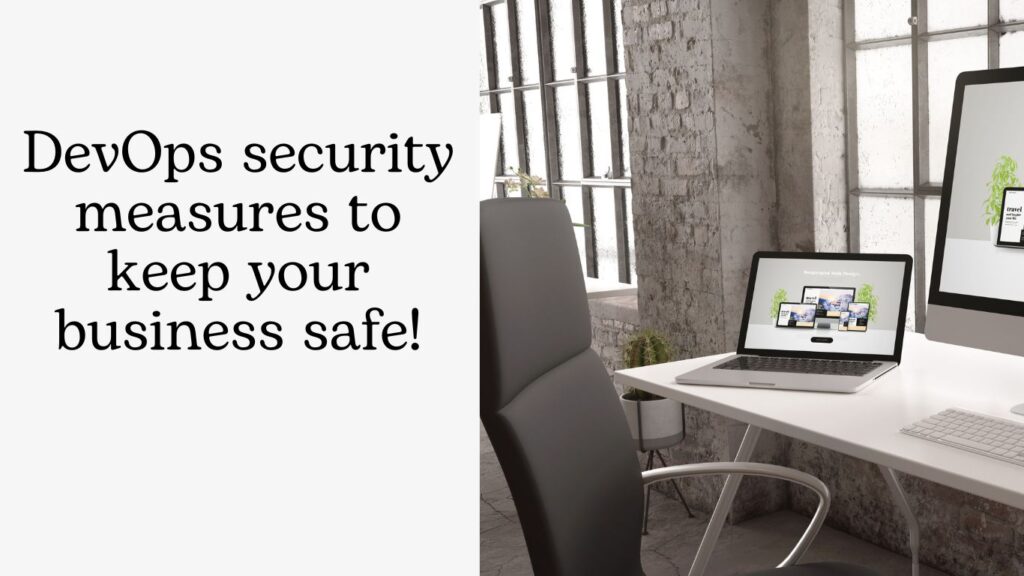
Worldwide, businesses are eager to adopt DevOps as quickly as possible by undergoing a culture transformation or shift. While everyone is only discussing how quickly they can put this strategy into practice, they overlook the security implications of this modification.
In a quick and productive DevOps atmosphere, intelligent firms realized that security teams needed to be included in the seamless programming and maintenance workflow. As a result, “DevSecOps” was established to draw attention to yet another transformative change integrating security into DevOps.
They primarily use these security measures to keep themselves safe while releasing more apps faster than ever before. This article will cover several DevOps security tool features and how you can use them to your advantage.
What is DevOps Security?
DevOps Security focuses on integrating protection industry standards into the fast-release phases of today’s application development and deployment operations (DevOps).
An increasing number of emerging groups are advocating for frequent micro-releases rather than a few major application modifications each year to take advantage of market requirements more quickly.
DevOps teams develop and destroy changing environments quickly and frequently while interacting hundreds or even thousands of times daily.
Corporate pressure to keep up this intense speed may foster a culture where production takes precedence over safety. For the security of elevated privileges, this has significant ramifications.
It is because DevOps techniques may reveal security flaws that are firmly attributable to privilege control. But traditional PAM solutions are not made to accommodate the volume and speed needed for DevOps.
Reasons for Using DevOps Security Tools

Given that online threats are constantly developing methods to hack into systems, retrieve passwords, interfere, and keep their targets captive to price, security problems and software distribution network threats have become more frequent than ever and will remain a concern.
It’s critical to have the right safe programming tools and expertise to quickly identify and address security issues before more damage is done. It takes 206 days on average to discover unauthorized access.
It’s crucial to have insight into your application’s internal operations from idea to implementation. Strong toolchains function as a virtuous cycle for security experts and programmers by continuously scanning an application’s codebase, interfaces, SDLC systems, and CI/CD pipelines for weaknesses.
By ensuring that security gets integrated into every stage of the DevOps process, these technologies make it simple to stay one step ahead of the bad guys while also helping to reduce costs.
Furthermore, they enable organizations to streamline security procedures and monitoring so that you may move through DevOps while including protection along the way.
The Advantages of DevOps Security Tools

The fact of the matter is that vulnerability scanning experts and engineers now have access to a wide range of quick and easy DevSecOps security solutions, making it simple to incorporate protection through every stage of the SDLC.
Here are some advantages of implementing DevOps security technologies in your firm:
- Automating Workflows
The automation component, a crucial component of DevOps effectiveness, will be one of the most significant and noticeable advantages that organizations will encounter.
It permits faster and more reliable software delivery while lowering the chances of making mistakes throughout the installation phase. Additionally, it assists you in creating a framework that can get used repeatedly for future quick builds and releases.
These technologies will alert the team to any unexpected behavior using vulnerability scanning, allowing them to take immediate action to fix the problem.
- Better Change Management & Tracking
A robust DevOps pipeline lowers the risk of unauthorized access by keeping track of code modifications and maintaining a secure and unaltered procedure across the development lifecycle.
In order to find any alterations or possible threats, some DevOps vulnerability scanning solutions can log updates made to the database and correlate them to a standard.
It helps teams identify future risks before they become breaches or outages by enabling them to understand how, when, and why an issue occurred.
- Control Access Effectively
Authentication, authorization, and restricted access control can help keep your systems secure and structured.
Simple solutions include implementing two-factor authentication or asking users to create passwords that are hard to guess before gaining access to resources.
Additionally, using the idea of specific security entry as a guide, you can perform audits on API keys and access tokens using secure development tools.
Developers must submit requests for additional authorization through a security solution if they require more rights than those provided by their account or API key.
Because of this, each person, application, and process get guaranteed to have only the rights necessary to carry out their tasks.
Fundamental Barriers to DevOps Security

Here are some of the challenges you may encounter in DevOps security.
- Quick Pace Of Growth
DevOps changes quite quickly. Due to the fact that infrastructure improvements get often implemented as a literal layer of hardware, it takes a while for them to become operational in legacy environments.
The scalability of increased space in a couple of minutes, as opposed to hours or days, is another benefit of using cloud-based architecture. In a specific setting, changes become noticeably higher when these factors are combined.
A setting with that much variability was not get designed to accommodate legacy technology and procedures.
- Excessive Work Containment
The security ecosystem gets expanded by these new factors. They offer beneficial attributes for contemporary development and production processes. There are more possible attack routes to watch over and defend because of the core processor, orchestration, and connectivity.
- Cloud Protection
The widespread use of cloud-first technology has led to yet another difficulty. Compared to a traditional, on-premise setup, the cloud exposes a much greater system vulnerability due to its ill-defined and hazy network borders.
You can expose almost any service provided via the internet with just a few mouse clicks or lines of code.
Conclusion
Last but not least, DevOps security is now essential. Utilize it to its fullest extent if you want to secure your development ecosystem. To assist you in making better use of DevOps security, we have gathered all relevant information in this article.
























